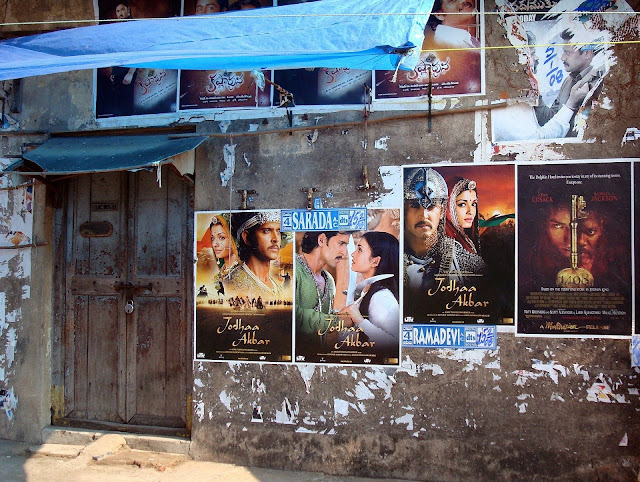1. The culture of Mumbai is a blend of traditional festivals, catering, music, dance and theater. The city enjoys a multi-lingual and multi-faceted lifestyle compared to other capitals of the world, including elaborate catering, entertainment and nighttime charm. In the history of Mumbai, it has primarily been a major commercial center. People from different regions kept coming here, due to which many cultures, religions, etc. live together here.
2. Mumbai is the birthplace of Indian cinema. Dada Saheb Phalke established this industry here through silent film. Only after this Marathi movie was also started here. Then the oldest film aired here in the early twentieth century. Mumbai also has a large number of cinema halls, which feature Hindi, Marathi and English films. The largest IMAX Dome Theater in the world is also located in Wadala in Mumbai. The Mumbai International Film Festival and the Filmfare Awards distribution program are held in Mumbai. Although most theater groups established in the British Raj of Mumbai have disbanded since 1950, a rich theater culture has developed in Mumbai. Apart from the three languages, Marathi and English are also developed in other regional languages.
3. There is also no shortage of art lovers here. Many private commercial and government art galleries are open. These include the Jehangir Art Gallery and the National Museum of Modern Art. The Bombay Asiatic Society, built in 1833, houses the city's oldest library, the Chhatrapati Shivaji Maharaj Vastu Sangrahalaya (formerly Prince of Wales Museum), a famous museum in South Mumbai, where many collections of Indian history are preserved. The zoo in Mumbai is named Jijamata Udyan (formerly Victoria Gardens), which also has a lush green garden. The city’s richness in literature gained international fame when Salman Rushdie and Arvind Adig received Man Booker Awards. Rudyard Kipling, a resident of the same, also received the Nobel Prize in 1907. Marathi literature has also become modern along with the pace of time. It has always been visible in the works of writers of Mumbai such as Mohan Apte, Anant Atmaram Kanekar and Bal Gangadhar Tilak. It has received further encouragement from the annual Sahitya Akademi Award.
4. The buildings of Mumbai city have a confluence of Jhalakta architecture, Gothic architecture, Indo Renaic, Art Deco and other contemporary architectural styles. Most buildings of the British period, such as the Victoria Terminus and the University of Bombay, are built in the Gothic style. European influences are clearly visible in their architectural components, such as German gable, Dutch style ceilings, Swiss style woodwork, Roman arches as well as traditional Indian components. There are also some Indo Serenic style buildings, such as the Gateway of India. Art deco-style constructions appear along the Marine Drive and Oval grounds. Mumbai has the highest number of art deco style buildings in the world after Miami. Modern buildings are more visible in new suburban areas. Mumbai has by far the highest skyscrapers in India. Of these, 95 are built and 242 are under construction. As of 2009 Established in 1955, the Mumbai Heritage Conservation Society MHCC takes care of the conservation of heritage sites located in the city. Mumbai has two UNESCO World Heritage Sites - Chhatrapati Shivaji Terminus and Elephanta Caves.The famous tourist destinations of the city include Nariman Point, Girgaon Chowpatty, Juhu Beach and Marine Drive. Essel World is the theme park located near Gorai Beach. It is also Asia's largest theme water park, Water Kingdom.
5. Residents of Mumbai celebrate Indian festivals as well as other festivals. Diwali, Holi, Eid, Christmas, Navratri, Dussehra, Durga Puja, Mahashivratri, Muharram etc. are the major festivals. Apart from these, Ganesh Chaturthi and Janmashtami are celebrated with some more pomp and show. In Ganesh Utsav, huge and grand pandals are installed in the city, in which huge idols of Lord Ganpati are installed. These idols are immersed in the ocean ten days later on the day of Anant Chaudas. On the day of Janmashtami, a very high Makhan matka is tied by the committees in all the localities. The children and boys of the locality break it by putting it together. Kala Ghoda Kala Utsav is an exhibition of art, in which works from various fields of music, such as music, dance, theater and movies, etc. are displayed. The week long Bandra festival is celebrated by the locals. The Banaganga festival is a two-day annual music festival, held in the month of January. The festival is organized by Maharashtra Tourism Development Corporation (MTDC) near Etihasik Banganga Sarovar. Elephanta Festival — held every February on Elephanta Island. This Indian classical music and classical dance program attracts many Indian and foreign tourists. The special public holiday of the city and the state is observed as Maharashtra Day on May 1 to commemorate the anniversary of the formation of the state of Maharashtra on May 1, 1960.







No comments:
Post a Comment